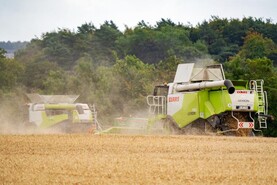The 2020/21 season has been a challenging one for global oilseed rape production. The season started with an expectation of a reduced European rapeseed crop due to a wet planting period and pest pressures.
As the season unfolded, the situation across Europe turned out to be much worse than anticipated.
The crop was harmed by continued wet weather over winter followed by a spring drought.
This, coupled with pest damage, meant that EU rapeseed production for 2020/21 will likely be well below the five-year average.
The UK will likely see its lowest production figure since 2001, according to the Agriculture and Horticulture Development Board (AHDB).
COVID-19
The coronavirus pandemic has had a huge impact on all commodities and oilseeds are no exception.
Due to EU mandates, bio-diesel demand is only expected to be marginally reduced, by around 6%, for 2020.
As the global economy kick-started again, there was some recovery, but it will likely be some time yet until pre-pandemic volumes are achieved.
However, with many regions in the midst of a second wave of the virus, the impact of this remains uncertain.
Opportunities
Given the growing conditions EU oilseed rape has faced over the past 12 months, it comes as little surprise that the outlook for European oilseed rape in the short term is extremely tight, the AHDB reports.
A poor harvest, lower carryover stocks for 2020/21 and marginally declining demand has led French-based Strategie Grains to forecast EU stocks to contract by 0.7 million tonnes over the season.
As a result, it is likely that a greater emphasis will need to be placed on non-European imports over the coming year.






 This is a subscriber-only article
This is a subscriber-only article










SHARING OPTIONS: